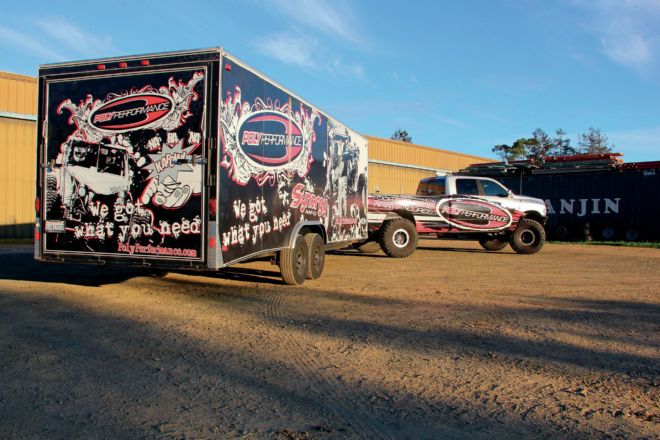
 Fred Williams
Brand Manager, Petersen’s 4Wheel & Off Road
Photographers:
Imago Trailer
Fred Williams
Brand Manager, Petersen’s 4Wheel & Off Road
Photographers:
Imago Trailer
We all know that fixing up your 4x4 to stronger parts can allow you not only to run bigger tires but also do more work with your vehicle, but did you know that it’s possible to do the same thing with your trailer? How many of you have nice trailer that you think is perfect for hauling your 4x4 to the desert, but by the time you are all loaded up with trail rig, spare parts, camping gear, tools, and so on, you are over the safe cargo limit of the trailer? Our friends at a local 4x4 shop were in just that predicament. To make matters worse, they had a big lifted truck that they wanted to tow with, requiring a massive drop hitch.
When you carry more than a trailer’s capacity, it results in premature wear
Most boxed/flatbed trailers equipped with a six-lug axle and a 15-inch wheel/tire combo are rated at between 3,500 and 6,000 pounds per axle, so that is 7,000 to 12,000 total pounds of load hauling ability, including the weight of the trailer. And just like larger truck axles, an eight-lug trailer axle is usually rated at 5,200 to 7,000 per axle so somewhere between 10K and 14K gross weight. The trailer that our friends were using was only equipped with the smallest 3,500-pound rated axles. After much use and abuse by hauling heavy loads, the poor trailer was succumbing to the weight. The options were replace the trailer or upgrade. They chose to take it to Imago trailers in Colton, California, for an upgrade to beefier 7,000-pound rated eight-lug axles.
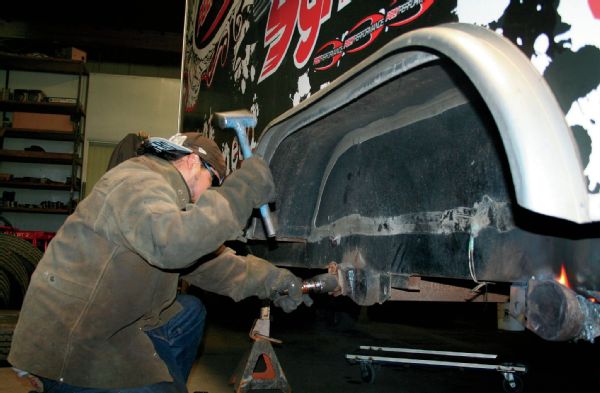
When you carry more weight than a trailer’s capacity, it results in premature wear and possible failures. The most common failures are uneven tire wear, tire sidewall damage, and bent or broken axles and spindles. The best advice is to not get in this mess in the first place by buying a trailer with the correct capacity for what you haul, but it is possible to upgrade the axles and suspension for heavier cargo—to a point. In the case of this 26-foot box trailer, it had been upgraded with interior cabinets, extra tools, and spare parts for a big trail Jeep that runs tons and 42-inch tires. The poor little six-lug axles and 15-inch tires were not surviving.
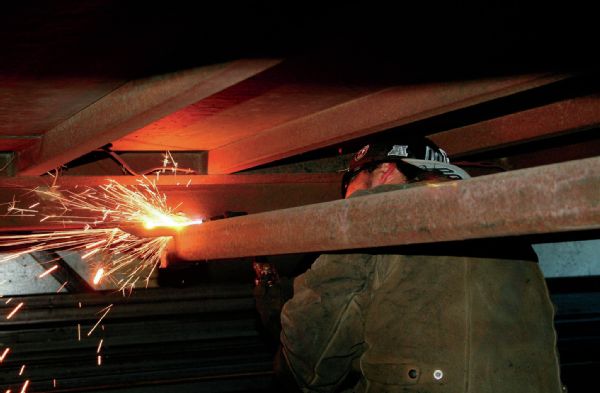
The first step in upgrading is removing the small stuff. The crew at Imago Trailer took torch to the torsion axles because they don’t just bolt to the trail chassis. The torsion axles are not a bad option, but they can be limited in the amount of repairs possible short of replacing them completely. The consensus was that swapping over to a set of leaf-sprung axles would gain us 4 inches of height and better weight distribution over a similarly rated torsion axle.
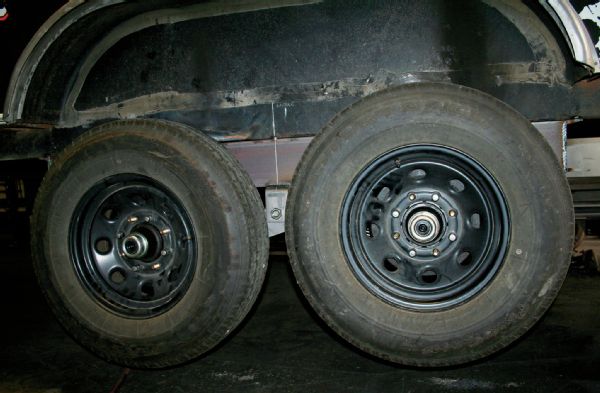
Gaining height may seem counterintuitive for a trailer. Why raise your cargo even higher from the ground? But in fact it opens up three positives for this particular trailer. First, the trailer can now run a bigger G-rated 235/85R16 tire, up from the prior C-rated 225/75R15 2540. Second, these tires can hold more weight. Third, these tires are taller, which isn’t a bad idea for a trailer that gets drug down rutted dirt roads where it would often bottom out and get banged into the ground.
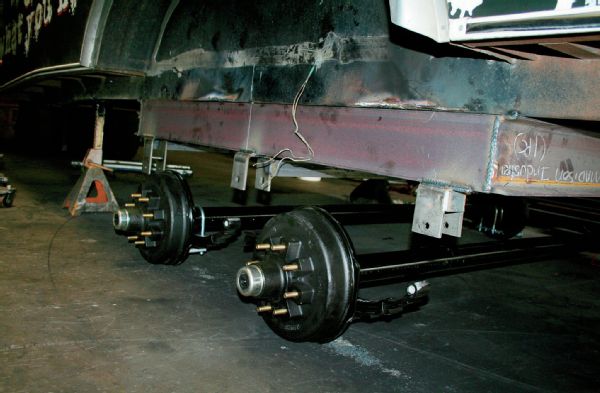
In order to clear the bigger tires, the leaf springs needed additional help. A 4-inch subframe was added between the springs and the trailer chassis—a body lift of sorts. This brought the trailer up enough to clear the bigger tires from stuffing into the body/fenders of the trailer and, as an added benefit, meant that the giant tow rig no longer needed a big drop hitch to hook up to the trailer because it now rode higher. The leaf-spring design of the new suspension uses an equalizer bar between them to help distribute the load more evenly over both axles—another bonus.